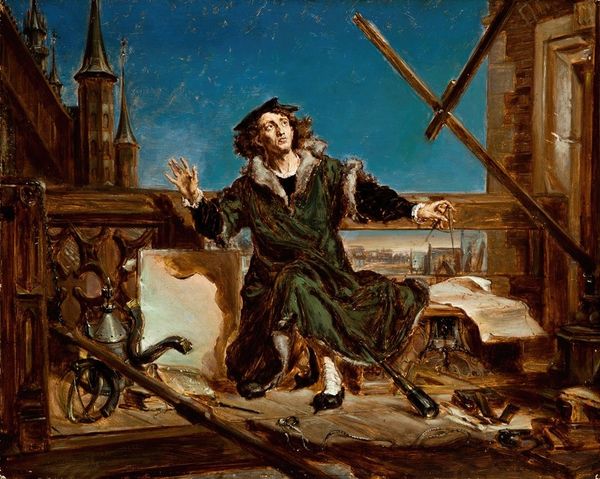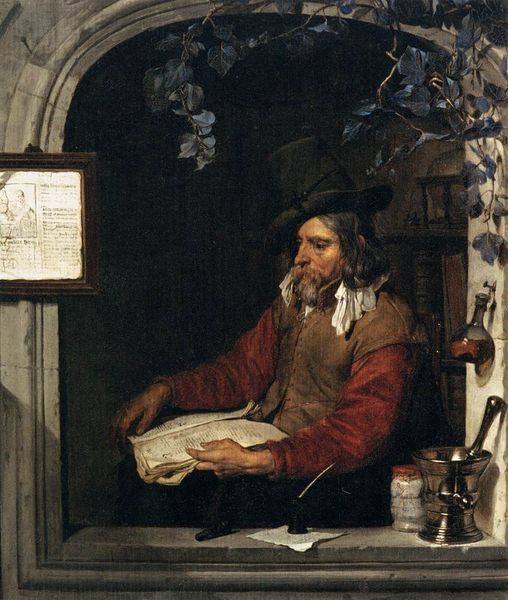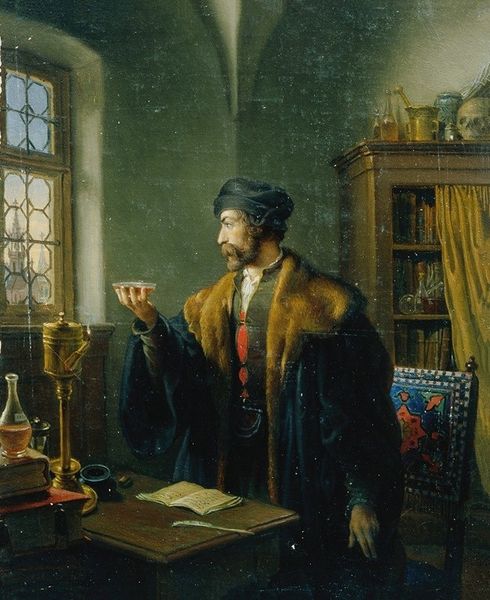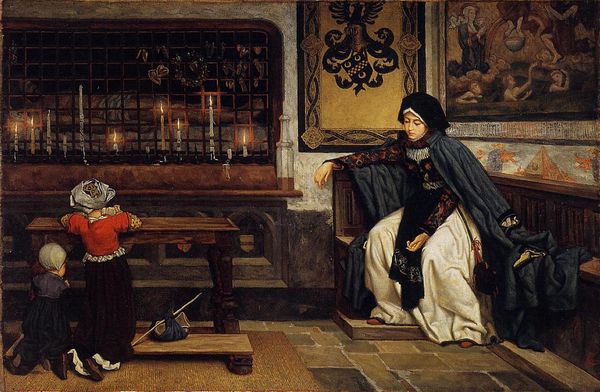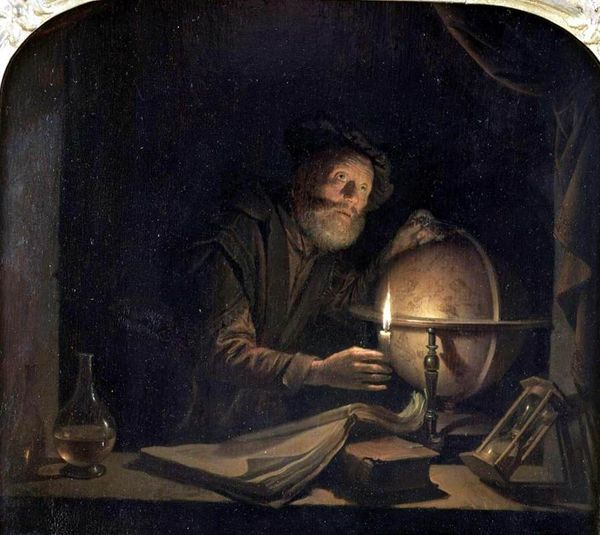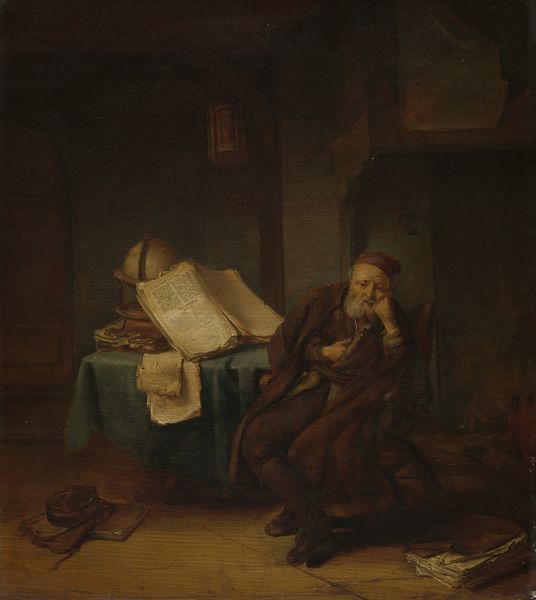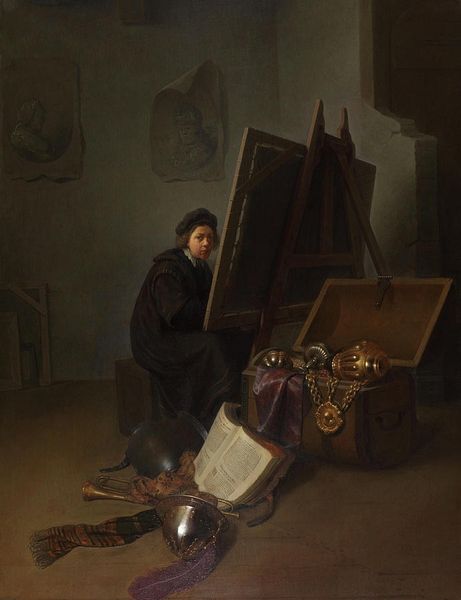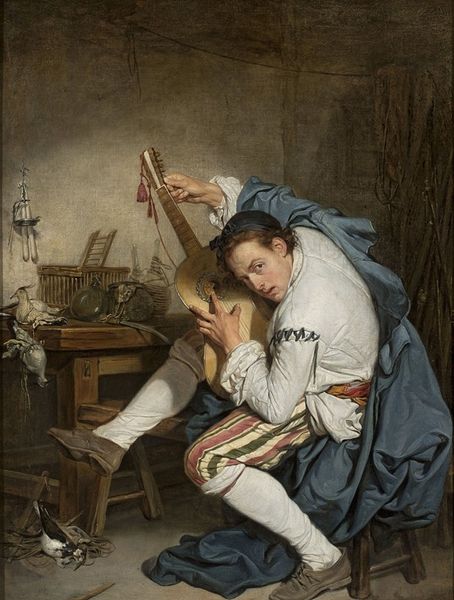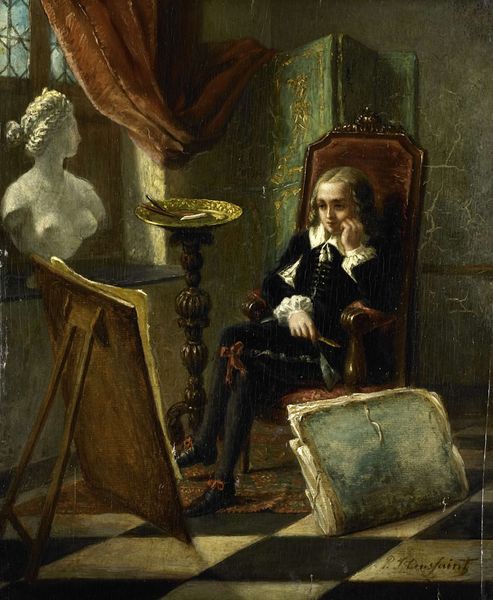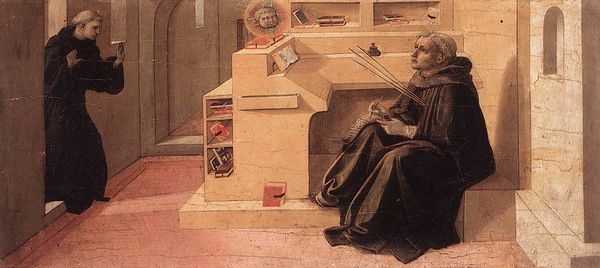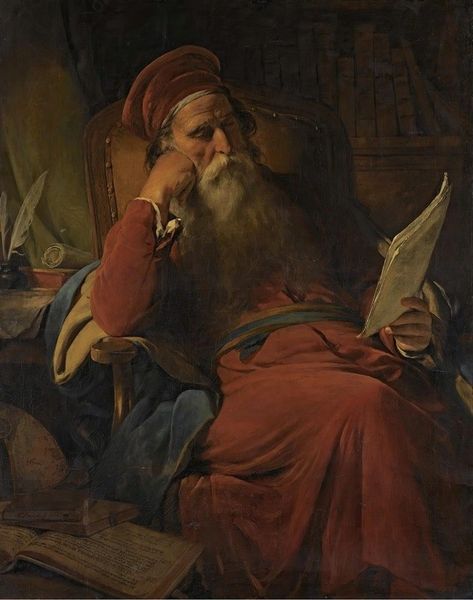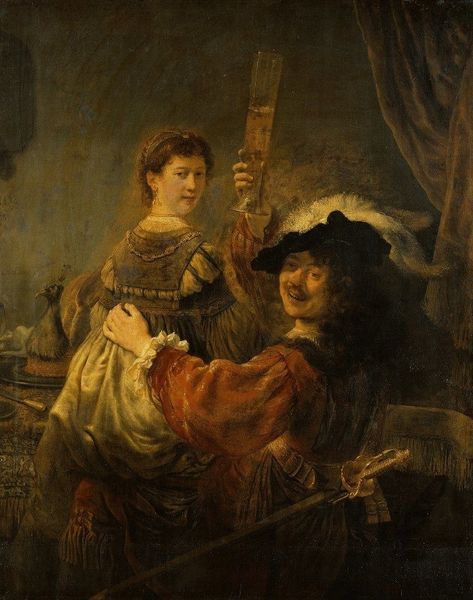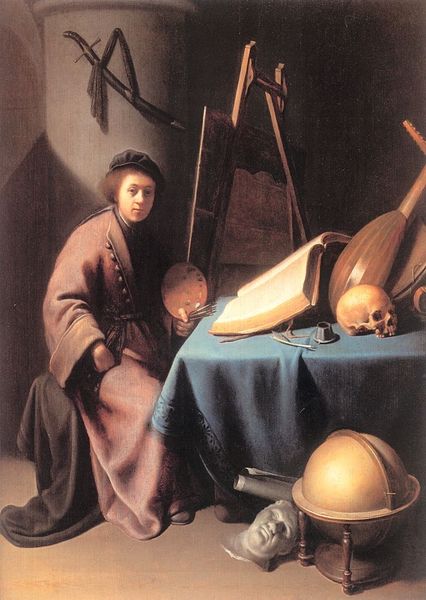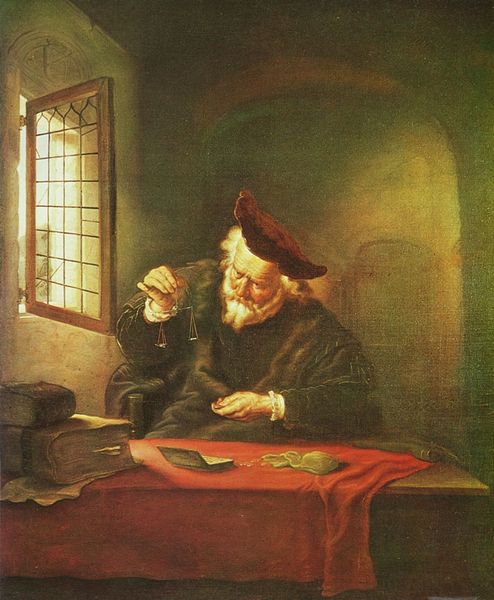
Dimensions: 221 x 315 cm
Copyright: Public domain
Editor: Here we have Jan Matejko’s “Copernicus in the Tower at Frombork,” painted in 1873. It’s an oil painting and depicts Copernicus seemingly in the midst of making an important discovery. What do you see in this piece that helps to give it historical context? Curator: I see more than just a portrait of a man making a discovery; I see a radical shift in the understanding of the universe, one that challenged existing power structures. Matejko situates Copernicus not just as a scientist but as a figure wrestling with the implications of his findings in a society dominated by religious dogma. The painting subtly captures that friction, the potential conflict between science and faith, reason and established authority. Editor: That’s an interesting point. I was focusing more on the composition, the way he's illuminated against the night sky, giving him an almost saint-like quality. Curator: Indeed, that contrast is powerful, isn't it? But consider the socio-political ramifications. Copernicus’s heliocentric theory threatened the Church's geocentric worldview, which had been used to justify a rigid social hierarchy. The Church's view placed Earth, and by extension humanity, at the center of all creation, granting it unique importance, something that Copernicus’s theory refuted. How might the challenges he faced, of intellectual freedom versus imposed social order, resonate today? Editor: It sounds as though it might be a difficult position to be in, but I suppose the piece can be interpreted differently by different people. The lighting and his gestures seem so dramatic! Curator: Precisely. Romanticism, of which Matejko was an advocate, used those artistic tools in an attempt to elicit emotional and ideological responses. It isn't merely about aesthetics. Romanticism, in this case, underscores the tension inherent in challenging dominant paradigms and prompts reflection on individual courage against systemic pressure. It also subtly comments on issues that are still so crucial and hotly debated in contemporary discourse, for instance, power, authority, and individual versus collective well-being. Editor: I never thought about it that way before! Seeing the work through that lens adds a lot of depth. I am thankful that art helps bring us a perspective into social change and challenges over time. Curator: And recognizing those threads enriches our understanding not just of the art, but also of ourselves.
Comments
No comments
Be the first to comment and join the conversation on the ultimate creative platform.
